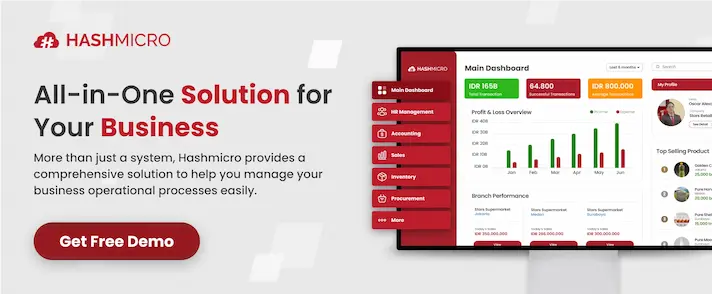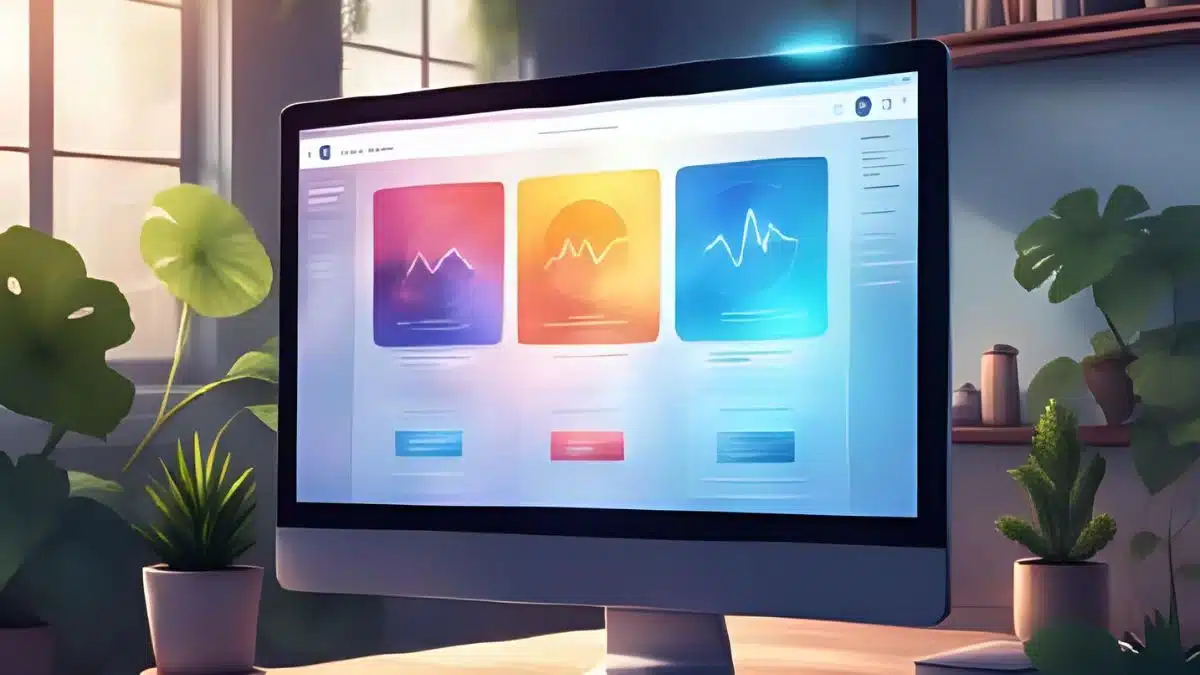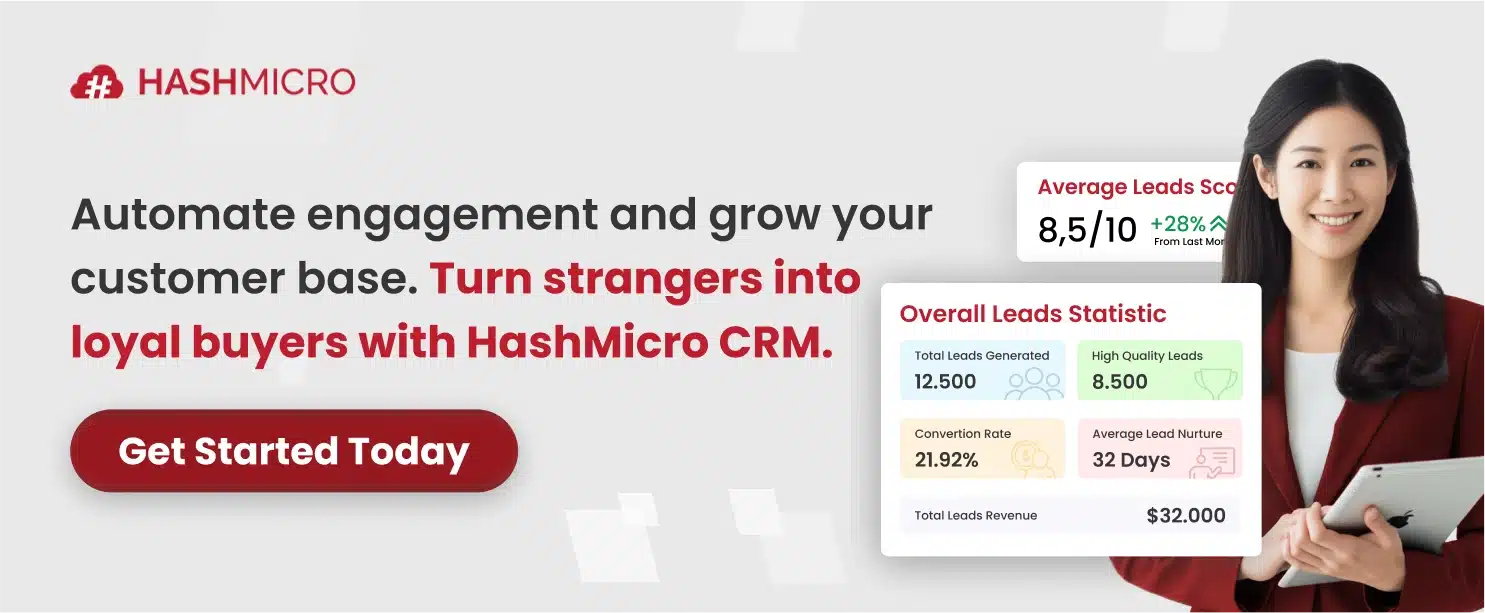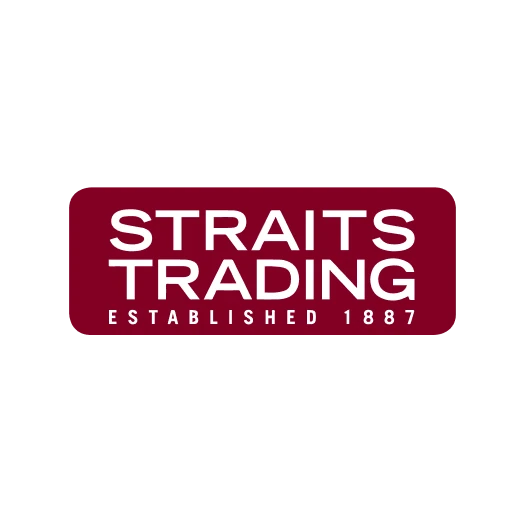Have you ever spent a significant marketing budget, only to see a few prospects become customers? One of the main reasons could be the lack of an effective lead capture system to collect prospect information so your sales team can follow up.
According to Ruler Analytics, 91% of marketers consider lead generation a top priority, yet over 80% of leads are lost due to poor follow-up or tracking. This highlights how crucial it is to have a structured and automated way to capture and manage leads.
This is where HashMicro CRM becomes the ideal solution. With features like automated lead capture, form integration, and real-time tracking of prospect interactions, HashMicro helps businesses convert more leads into sales.
In this article, we’ll explore lead capture, why it matters, and practical strategies for implementing it in your business.
Key Takeaways
|
What is Lead Capture?
Lead capture is the process of collecting information from potential customers, such as names, emails, or phone numbers, usually through forms, landing pages, or digital tools. Marketing or sales teams then use this data to follow up and convert prospects into paying customers.
Lead capture is critical in the early stages of the sales funnel. It allows businesses to identify and engage with individuals who have shown interest in their products or services, whether by visiting a website, downloading a resource, or filling out a contact form.
Lead capture aims not just to collect data but also to gather qualified leads, people who are more likely to convert. Effective lead capture typically involves offering value in exchange for a prospect’s information, such as free trials, webinars, or exclusive content.
How to Create a Lead Capture Strategy
To turn interest into action, you need more than just a form of strategy. Here are five key steps to build an effective lead capture process:
1. Define your target audience
Start by identifying your ideal leads. Understand their needs, challenges, and online behavior so you can craft relevant messages and choose the right platforms to reach them.
2. Offer a valuable lead magnet
Create an incentive that encourages visitors to share their contact information. This could be a free demo, downloadable guide, discount code, or exclusive webinar, anything that solves a problem or delivers value to your audience.
3. Build a high-converting capture form or Landing Page
Design a form or landing page that is simple, visually appealing, and focused on a single action. Keep fields minimal just enough to qualify the lead without causing friction. Make sure your CTA is clear and engaging.
4. Use a CRM to store and manage leads
Integrate your forms with a CRM system like HashMicro CRM to automatically store incoming leads, segment them, and assign follow-up tasks. This eliminates manual work and ensures no opportunity is missed.
5. Follow up and optimize continuously
Once leads are captured, nurture them with automated follow-ups emails, reminders, or personalized offers. Regularly analyze your results, such as conversion rates or lead quality, and refine your strategy to improve performance over time.
Types of Lead Capture Forms
Lead capture forms come in various formats, each tailored to how users interact with your website. Generally, they fall into two categories: in-page forms and pop-up forms. Using the right mix can help you maximize conversions without harming the user experience.
1. In-page forms
These are embedded directly into the layout of your website and are always visible to visitors. Common types include:
- Footer forms, which sit at the bottom of your site and are great for newsletter sign-ups or general updates.
- Contact page forms, allow users to reach out for inquiries or assistance.
- Landing page forms, focused on specific campaigns or offers, typically with minimal distractions.
- Product page forms, used to collect interest in particular items, like “back-in-stock” alerts.
These subtle and user-initiated forms make them suitable for long-term engagement strategies.
2. Pop-up forms
Pop-ups are more proactive and can appear based on user behavior. Types include:
- Welcome pop-ups, shown to new visitors upon landing.
- Exit-intent pop-ups, triggered when a user is about to leave the site.
- Scroll-triggered pop-ups, appear after a visitor scrolls a certain percentage down the page.
- Chat pop-ups, open conversational interfaces to engage and collect information interactively.
- Sticky bars or sidebars, which stay visible as users navigate, offering persistent CTAs.
- Mobile-optimized pop-ups, designed for a seamless experience on smartphones and tablets.
While pop-ups can increase lead capture significantly, they should be timed and designed carefully to avoid annoying users.
By combining both in-page and pop-up forms strategically, you can engage visitors at different stages of their journey and convert more of them into qualified leads.
Benefits of Lead Capture
Lead capture is more than just collecting email addresses; it’s a strategic way to grow your customer base and improve marketing efficiency. Here are some key benefits:
1. Grow a targeted contact list
Instead of reaching a general audience, lead capture allows you to build a database of people who have already shown interest in your product or service. This makes your outreach efforts more focused and cost-effective.
2. Improve conversion rates
You engage users with the right lead magnets and forms when their intent is highest. This increases the likelihood they’ll take the next step, whether it’s signing up, booking a demo, or making a purchase.
3. Enable personalized marketing
By collecting data like user behavior, preferences, or pain points, you can tailor your follow-up emails, offers, and conten,t resulting in higher engagement and better relationships.
4. Streamline the sales funnel
Capturing and qualifying leads early on helps your sales team focus on prospects with real potential. With CRM integration, you can automate follow-ups, segment leads, and reduce manual work.
5. Measure campaign effectiveness
Every lead captured provides measurable data. You can track where leads are coming from, which offers work best, and how they move through the funnel helping refine your overall marketing strategy.
Conclusion
Lead capture collects information from potential customers through forms or digital tools, so businesses can follow up and guide them through the sales journey. It serves as the bridge between marketing interest and actual sales opportunities.
Lead capture is important because it can grow a targeted database, improve conversion rates, and enable personalized engagement. Without it, businesses risk losing valuable prospects and wasting their marketing efforts on unqualified traffic.
Companies need more than forms to implement this effectively; they need an integrated system. HashMicro CRM provides automated lead capture, real-time tracking, and lead scoring, making it easier for teams to manage, nurture, and convert leads efficiently.
Want to see how it works in action? Request a free demo of HashMicro CRM and discover how it can help you capture and convert more leads faster.
FAQ About Lead Capture
-
What is the difference between lead generation and lead capture?
Lead generation is about attracting and sparking interest in a product or service, while lead capture is the process of converting that interest into actionable contact information for the sales team.
-
What is the lead capture process?
Lead capture is the process of gathering details from your website visitors, such as their name, phone number, or email address. This information allows you to follow up with them later and turn them into paying customers. Typically, this data is collected through a dedicated lead capture page or form.
-
What do lead capture forms mean?
A lead capture form serves as the first touchpoint between you and a potential client. It works like a contact form where you collect essential details and learn about the services they’re interested in.

































